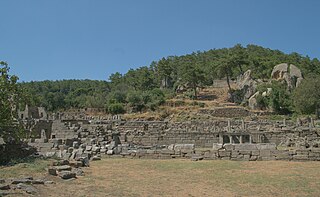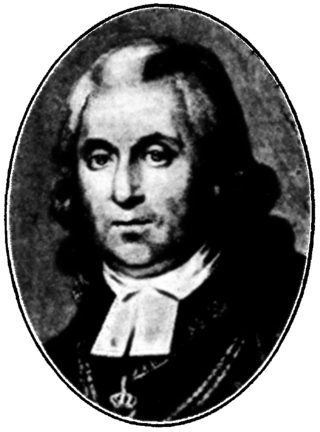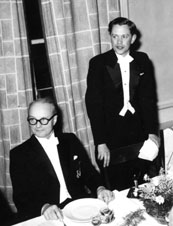Related Research Articles

Uppsala University is a public research university in Uppsala, Sweden. Founded in 1477, it is the oldest university in Sweden and the Nordic countries still in operation.

Johan Axelsson Oxenstierna af Södermöre was a Count and a Swedish statesman.

Oxenstierna is a Swedish noble family, originally from Småland in southern Sweden which can be traced up to the middle of the 14th century. The Oxenstierna family held vast estates in Södermanland and Uppland during the late Middle Ages and Renaissance. In the 15th century, the family at times held the position of Regent of Sweden during the turbulent civil wars of the Kalmar Union. The family began to adopt its armorial designation of Oxenstierna as a personal surname towards the end of the 16th century. In the case of earlier members of the family, the surname has been retroactively applied by historians.

Uppland County, or Upplands län, was a county of the Swedish Empire from 1634 to 1641, and from 1654 to 1714. Between 1641 and 1654, and after 1714, it was split into the Uppsala County and the Stockholm County.

Labraunda is an ancient archaeological site five kilometers west of Ortaköy, Muğla Province, Turkey, in the mountains near the coast of Caria. In ancient times, it was held sacred by Carians and Mysians alike. The site amid its sacred plane trees was enriched in the Hellenistic style by the Hecatomnid dynasty of Mausolus, satrap of Persian Caria, and also later by his successor and brother Idrieus; Labranda was the dynasty's ancestral sacred shrine. The prosperity of a rapidly hellenised Caria occurred in the during the 4th century BCE. Remains of Hellenistic houses and streets can still be traced, and there are numerous inscriptions. The cult icon here was a local Zeus Labrandeus, a standing Zeus with the tall lotus-tipped scepter upright in his left hand and the double-headed axe, the labrys, over his right shoulder. The cult statue was the gift of the founder of the dynasty, Hecatomnus himself, recorded in a surviving inscription.

Sarek National Park is a national park in Jokkmokk Municipality, Lapland in northern Sweden. Established in 1909, the park is the oldest national park in Europe. It is adjacent to two other national parks, namely Stora Sjöfallet and Padjelanta. The shape of Sarek National Park is roughly circular with an average diameter of about 50 km (31.07 mi).

Jacob Axelsson Lindblom was a Swedish scholar and professor who became Archbishop of Uppsala, a position he held between 1805–1819.

Anders Per-Johan Axelsson, commonly abbreviated to P. J. Axelsson, is a Swedish former professional ice hockey forward, who most recently played with Frölunda HC of the Swedish Elitserien. His nickname in Sweden is "Pebben", while his nickname in Boston is “Potatoes”. He was the longest-tenured member of the NHL's Boston Bruins at the time of his departure from North American play in 2009, having been with the Boston team from 1997–2009.

Einar Nilson Gjerstad was a Swedish archaeologist. He was most noted for his research of the ancient Mediterranean, particularly known for his work on Cyprus, as well as his studies of early Rome.
Gustaf Banér was a Swedish noble, member of the Privy Council of Sweden.

Östgöta nation or ÖG, as it is called informally, is a student society and one of thirteen nations at Uppsala University. Though Östgöta nation had existed in various forms previously, the nation's constitution was drawn up on 8 November 1646 and that is now considered its official date of creation.

Ulrika Eleonora Strömfelt, was a politically active Swedish noble and courtier. She is known for her part in the attempted Coup d'état of queen Louisa Ulrika in 1756.

Henning Filip Hjulström was a Swedish geographer. Hjulström was professor of geography at Uppsala University from 1944, and in 1949, when the subject of geography was split, he became professor of Physical Geography.

Olaus or Olof Verelius was a Swedish scholar of Northern antiquities who published the first edition of a saga and the first Old Norse-Swedish dictionary and is held to have been the founder of the Hyperborean School which led to Gothicism.
Karl Axel Jansson was a Swedish politician, belonging to the Communist Party of Sweden.
Bjorn Axelsson is a Swedish organizational theorist and Professor of Business Administration at the Stockholm School of Economics, known for his work on industrial networks.

Åke Sundborg was a Swedish geographer and geomorphologist known for his contributions to the hydrology and geomorphological dynamics of rivers. He was active at Uppsala University where he studied under the supervision of Filip Hjulström eventually succeeding him on the chair of physical geography. Besides his studies of rivers Sundborg made contributions on the climate of cities, the distribution of loess and the sedimentation of reservoirs and lakes. He studied rivers in Sweden as well as various large rivers in Africa and Asia.

Sune Lindqvist was a Swedish archaeologist and scholar. He worked at the Swedish History Museum, where he was responsible for the finds from the boat graves at Valsgärde, and later at Uppsala University, where he wrote two major works alongside several hundred other publications.

Knut Martin Stjerna was a Swedish archaeologist and scholar, notable for a number of papers analyzing Beowulf from an archaeological perspective. He was a lecturer at Uppsala University, where he taught, among others, Birger Nerman and Sune Lindqvist.
References
- ↑ Uppsala universitet (1965). Skrifter rörande Uppsala Universitet: Inbjudningar. B · Volumes 16–26. Almqvist and Wiksell. p. 63.
- ↑ Naturgeografin i Uppsala före Filip Hjulström
- ↑ Adressar Géographique Du Monde: - Volume 2. International Cartographic Association, International Geographical Union. 1960. p. 538. Retrieved 10 March 2021.